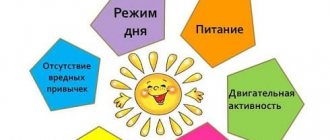Autonomic dysfunction, vegetative-vascular dystonia (VSD, SVD) is not a disease in the scientific sense of the word. However, such a phenomenon exists, occurs quite often and brings considerable suffering to its owners. So what is it? Autonomic dysfunction of the nervous system is a syndrome that has several causes, a complex of symptoms including disturbances in the cardiovascular, respiratory, and digestive systems, psychoneurological disorders, thermoregulation disorders and the formation of neurosis. The mechanism of occurrence of autonomic dysfunction is based on stress and excessive emotional stress against the background of existing somatic and neurological diseases. Other possible causes include alcohol abuse, hormonal imbalances, and some chronic diseases.
The manifestations of autonomic dysfunction are very numerous and individual for each patient. Invariable for establishing the diagnosis in question is the obligatory relationship between the manifestation of symptoms and the psychological state of the patient, his emotional experiences.
Causes of burning in the head
The cause of fever may be a rush of blood to the head in people suffering from VSD.
All causes of discomfort can be divided into 2 large groups: physiological (non-pathological) and pathological. Treatment is selected taking into account the etiology of the symptom.
Physiological
The first reason is the abuse of bad habits : smoking and alcoholic beverages. The nicotine contained in cigarettes causes constriction of blood vessels, impairing blood circulation and blood flow to the brain. This process is accompanied by the appearance of a headache and burning sensation under the skin of this area. The components contained in alcoholic beverages cause disruption of the natural structure of the brain, as well as changes in the functioning of the autonomic, endocrine systems, and blood vessels. All this is accompanied by an increased rush of blood to the head, accompanied by a burning sensation under the skin.
The second non-pathological cause of the symptom is heat or sunstroke . Under the influence of a provoking factor, the blood vessels in the head dilate, which causes a burning sensation and hot flashes. The condition is accompanied by other symptoms: vomiting and nausea, severe headaches, impaired consciousness, drowsiness. If you suspect sunstroke or heatstroke, you need to go to a cool room where open sunlight does not reach.
Heat in the head is a common occurrence for women who are at the age of menopause. The symptom also affects the neck. Sweating increases, the face turns red, and periodic weakness is felt. Hot flashes can be temporary, or they can occur on a permanent basis. A good way to smooth out the clinical picture is to take rhubarb extract.
Chronic stress and frequent emotional stress are provoking factors that contribute to the development of many diseases. With a single excitement, you may also feel heat in the head, which is complemented by a headache.
Vegetative-vascular dystonia occurs with hot flashes and heat in the head. This clinical picture indicates the imminent onset of a vagoinsular crisis. VSD occurs due to disturbances in vascular tone in the body, thermoregulation, and the functioning of the autonomic nervous system.
Certain foods also cause symptoms. For example, these could be hot seasonings and spices that many people add during cooking.
Pathological
With inflammation of the trigeminal nerve, pain and a sensation of heat occur without an increase in general temperature.
A common condition that is accompanied by heat in the head is trigeminal neuralgia . At the first signs of damage to the branch, you should consult a doctor. An effective treatment is electrical acupuncture, which reduces the intensity of clinical manifestations.
Thyroid diseases and hormonal imbalances are often accompanied by hot flashes and heat in the head and neck area. For example, when the level of female sex hormones decreases, vascular tone and regulation in the body are disrupted, which causes periodic ebbs and flows of blood to the head and in the opposite direction. As a result, sweating increases and a feeling of lack of air arises.
In men, the cause of the symptom is a decrease in the level of the hormone testosterone , which can occur during an exacerbation of endocrine diseases, after injury to the male genital organs. As a result, the tone of the blood vessels decreases, systematic expansion of the branches and spasms occur. This is accompanied by fever and redness of the face.
If the woman has not reached menopause, and the man is under 50 years old, there are no other physiological causes of burning in the head; the etiology may be associated with vascular diseases, for example, atherosclerosis and hypertension caused by it. Another reason is a hypertensive crisis, which is caused by impaired blood circulation in the brain.
With an acute respiratory infection , which is accompanied by a runny nose (sinusitis), a burning or feeling of heat in the head may occur. The reason for this is the accumulation of mucus in the nasal passages, which disrupts the pressure in the inner ear and thereby causes headaches.
With sinusitis and sinusitis, pain appears in the forehead and eye sockets
Sinusitis develops due to the addition of infectious pathogens (viruses, bacteria), exposure to external irritants, such as dust, animal hair, etc. Also, the causes of a runny nose are polyps present in the nose and a deviated septum.
To alleviate the clinical manifestations of sinusitis, experts recommend taking tablets with eucalyptus extract. The product is also sold in liquid form, which is added to water during steam inhalation.
If a person has recently suffered a stroke , this may cause hot flashes in the head and heat under the skin. A good method to relieve symptoms is aromatherapy. You can use lavender, rosemary, and mint oils.
Another common cause of a burning sensation in the head is migraine . The symptom occurs during or before an attack. Taking butterbur extract helps reduce the incidence of the clinical picture.
Various neoplasms in the cerebral region cause headaches, burning sensations, and hot flashes. The mechanism for the development of symptoms is due to compression of adjacent tissues and adjacent blood vessels.
Rush of blood to the head (feeling of heat)
A rush of blood to the head is accompanied by a feeling of heat, which instantly spreads throughout the body. During this time, the following symptoms may be observed:
- slight increase in body temperature; - slight increase in heart rate; - redness of the facial skin, the appearance of red spots; - profuse sweating.
Sometimes these symptoms are supplemented by difficulty breathing, mental anxiety, flickering in the eyes and ringing in the ears. The duration of such states ranges from 30 seconds to several minutes.
A frequent feeling of heat in the head may be a consequence of dysfunction of the cardiovascular system, in particular, the result of high blood pressure. At such moments, to make sure the cause is correct, you should measure your blood pressure. Arterial hypertension requires timely treatment.
In addition, healthy people can also feel a rush of blood due to a sudden increase in blood pressure during stressful situations. Other risk factors include:
- alcohol consumption; - smoking; - excess body weight; - elderly age; - exhausting physical activity; - taking certain medications; - heredity.
Also, a rush of blood to the head in women can be a sign of approaching menopause (menopause). The causes of their occurrence are considered to be a decrease in estrogen levels and a combination of hormonal and biochemical fluctuations. Sometimes these are the first harbingers of menopause. This condition may be accompanied by increased sweating at night.
A third cause of flushing may be atherosclerosis. In this case, heaviness and noise in the head intensify, and pain appears in the temples. Taking a reclining position, taking a laxative, and applying a cold, damp cloth to the forehead can help get rid of the condition. In addition, you need to ensure the outflow of blood from the head: put mustard plasters on your calves, or put your feet in hot water.
You can alleviate the general condition of hot flashes in various ways, depending on the cause that caused them. If they arise as a result of excessive consumption of alcoholic beverages, severe physical or mental stress, nervous stress, prolonged exposure to stale air, frequent constipation, then you can resort to the following measures.
1. Organize your lifestyle. Try to avoid alcohol and energy drinks. 2. For constipation, give cleansing enemas and monitor your diet. 3. Take a cool shower in the morning. 4. Avoid clothes that restrict movement. 5. Monitor your psycho-emotional state.
Symptoms and manifestations
Redness of the face and heat may indicate alcohol intolerance.
A burning sensation in the head is a clinical manifestation that may be accompanied by other symptoms depending on the cause.
Characteristics of the symptom:
- A sudden rush of heat to the head, which gradually spreads to nearby areas (neck, shoulder, back) or covers the entire torso.
- Heat accompanied by pain in the head, in an area characteristic of a specific condition or disease. For example, discomfort in the forehead area occurs more often with nervous tension, on one side of the head - with migraines, in the back of the head - with increased blood pressure.
- A burning sensation that occurs against the background of increased sweating.
- A symptom that appears in combination with redness of the skin of the face.
- Fever that occurs simultaneously with increased blood pressure and increased heart rate.
Depending on the accompanying manifestations, the doctor can indirectly determine the cause of the clinical picture. However, it is impossible to make an accurate diagnosis without the results of a comprehensive diagnosis.
Symptoms of autonomic dysfunction (almost all occurring sharply and acutely):
- changes in heart rhythm (tachycardia or bradycardia);
- feeling of lack of air, shortness of breath;
- pallor of the skin or, on the contrary, redness as a result of a rush of blood;
- increase or decrease in blood pressure;
- heartache;
- feeling of fear, anxiety;
- headache;
- dizziness, weakness, near fainting, tingling and goose bumps, noise in the head;
- chills;
- sweating;
- sore throat.
One of the most common options is a panic attack. This is a sudden onset anxiety disorder, initiated by a sharp release of the stress hormone - adrenaline. The pulse and breathing quicken, despite this the person feels short of air, experiences increasing anxiety, dizziness, weakness in the legs. Symptoms appear in attacks, with the attack passing in 10-40 minutes, leaving behind a feeling of weakness and a feeling of fear of a new attack. Over time, the situation only gets worse - the person becomes a slave to his fear of a new attack. A particular danger of VSD is an increased tendency to commit suicide. However, it is possible to help people suffering from autonomic dysfunction. The initial stages of VSD are treated with several visits to a psychotherapist. More advanced cases require complex treatment from a neurologist, but they are also not hopeless. Breaking the vicious circle of fear and pain is the main goal of treatment.
Diagnostic methods
If you feel hot, you need to check your blood pressure.
If you often feel hot in your head, it is first recommended to visit a therapist, who, if necessary, will refer you to a specialized specialist. To exclude a particular disease, you need to undergo a number of diagnostic tests:
- laboratory diagnostics, for example, urine and blood tests, hormonal analysis;
- studies to detect changes in blood pressure;
- cardiogram;
- echoencephaloscopy and electroencephalography;
- magnetic resonance and computed tomography;
- X-ray examination and ultrasound diagnostics.
After receiving the research results, the doctor will confirm or refute his suspicions. You may need help from a neurologist, endocrinologist, cardiologist, or others.








